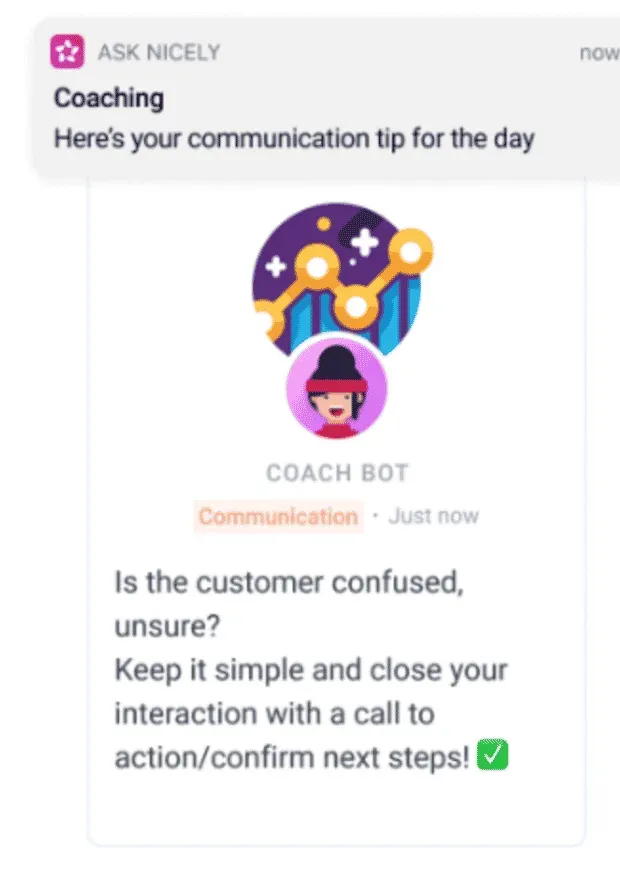Customer Experience, or CX, is one of those phrases that has been thrown around a lot in recent years.
It’s not just another industry buzzword. With the right approach, customer experience can help you increase sales and build brand loyalty.
We will break it down for you in this post. You will learn what customer experience is and why it matters. Plus, seven tips to get you started, four tools to make your life easier, and ways to measure it.
And yes, the latter requires some math, but don’t be intimidated. We promise you don’t need to know what an isosceles triangle is. Feel free to delete this information from your brain.
What is customer experience?
Customer Experience (CX) is how your customers perceive their interactions with your company. This is the accumulation of their feelings after each touch with your brand. Two pillars will significantly affect the quality of the customer experience:
- Your brand
- Your product or service
First, how they look at and interact with your brand will shape their perception. Branding efforts — especially how you look and sound — are essential to customer service. You don’t want to appear dirty or unprofessional. If you do this, the client will think you are sloppy and unprofessional. It’s unfair, but appearance is everything.
Let’s take Nike for example. The Nike swoosh and Just Do It slogan are iconic in both sports and fashion. It is the result of careful and consistent branding over decades.
Secondly, you can have the most sophisticated brand in the world. But if your customers’ experience with your product or service is rubbish, they won’t rate you well.
Your customer service also plays a role in how people feel about your products or services. You can often save a relationship if things go wrong. Acknowledge the person’s complaint. Then take steps to correct the situation.
Each point of contact is a chance for a positive, neutral, or negative outcome. By working to make these touchpoints positive, you will improve your customer experience.
Both pillars work to build trust and create a positive customer experience.
What is customer experience management?
Customer Experience Management (CXM) ensures that your customers have a positive experience with your business at every touchpoint. This might be a bit of a vague term, so let’s dive into it in more detail.
Customer experience management involves surveying, analyzing, and improving customer interactions with your brand. CXM covers. The spectrum covers how your team treats customers, how quickly they gain acceptance, how your website design.
Why is customer experience important?
In today’s competitive environment, customer experience is more important than ever. Satisfied customers are more likely to come back in the future and recommend your business to others.
And social proof is for sale. People are more likely to trust recommendations from their friends and family than branded advertising. One popular form of this social proof is user-generated content (UGC).
Happy customers also tend to spend more money on your business over time. If they become repeat customers, their value to your business skyrockets. So, you want to convert as many customers as possible into repeat customers.
You can calculate your customer lifetime value (CLV). This will show you how much budget you have to allocate to get them there. And, of course, part of that is improving the customer experience.
The formula for calculating CLV is as follows: CLV = (annual revenue per customer * customer relationship in years) – customer acquisition cost (CAC).
Customer Experience Management can be a powerful tool to drive growth and long-term success.
How to measure customer experience
Part of your customer service strategy should be measuring customer experience. But how can you measure someone’s feelings, you ask? With cold, hard numbers.
Here we go into detail about customer service metrics. But to save you time, we’ve highlighted the most important ones below.
The most commonly used customer experience metrics include:
- net promoter rating,
- Evaluation of the client’s efforts,
- Customer satisfaction assessment and,
- Average response time.
Net Promoter Score (NPS)
Calculation: NPS = percentage of promoters – percentage of detractors
Your Net Promoter Score is a scale from 0 to 10 that shows how much customers love and trust you. It comes from one simple question: “On a scale of 0 to 10, how likely are you to recommend this product/company to a friend or colleague?”If they fall under 6, they are detractors. 7-8 make them passive and 9-10 make them promoters.
Customer Effort Evaluation (CES)
Calculation: CES = (Number of customers who chose 4-5 / number of survey responses) * 100
CES measures how much effort a customer puts into your organization’s mission. These surveys identify pain points in the customer journey.
The CES surveys ask customers to rate their level of effort on a scale of 1 to 5. You could ask your customers something like this: “It was easy for me to return my product. Scale: from “strongly agree”to “strongly disagree”.
Customer Satisfaction Assessment (CSAT)
Calculation: CSAT = (number of satisfied customers / number of survey responses) * 100
CSAT is similar to NPS. It asks a few more questions that you can customize for your organization. All questions should be about customer experience.
For example, you might ask your customers to rate a specific part of your brand on a scale of 1 to 3 or 1 to 5. You might say, “How satisfied are you with the support you’ve received?”
You can also include open-ended questions in the CSAT survey, such as “How can we improve your experience?”
Average response time
Calculation: Average response time = total time required for the first response to customer requests / number of requests.
Knowing your average response time is vital because people like to be recognized. This makes them feel heard and respected, even if it’s a bot. And companies are using bots to improve response times and improve customer satisfaction.
7 tips to improve your customer experience
So you may feel pressured to provide an outstanding customer experience. Here are seven tips to make your life a little easier.
Invest in your brand
First impressions are important. Your customers will notice if you invest in your brand. Make sure you have a coherent visual expression, branding, and communication strategy.
It’s like wearing a suit and tie to an interview instead of a pair of old sweatpants. By looking and speaking a certain way, you subconsciously influence people into believing the way you look.
Zappo’s, for example, does a great job with their signature voice. As a result, they seem sassy and fun – like someone you’d like to stand next to at a party.
Invest in customer service
If someone has a bad experience with your customer service, it’s unlikely they’ll be loyal to your brand.
On the other hand, if someone has a bad experience with your products or services but has an exceptional customer experience, there is a chance you can turn them into repeat customers.
The value of your customer service experience goes beyond sales. Quality customer service can:
- reimburse the cost of attracting customers,
- nurture loyal brand enthusiasts who recommend their friends and
- cultivate testimonials and reviews.
Don’t forget to develop a social media customer service strategy as well.
Map the customer journey
A customer journey map will help you put yourself in their shoes. Understanding their path sheds light on potential pain points. Make it easy for your customers to complete the necessary tasks, such as searching, checking, or returning, and they will keep coming back. Make this menial job fun and they will love you for it.
Create a buyer persona
Like customer journeys, customer personas help you understand who your customers are and what they want. With Customer Journeys, you can see every touch point with the customer. With customer portraits, you can better understand how to make those touchpoints more enjoyable.
For example, if your customer persona is an older demographic, you might want to focus on making each touchpoint more accessible. Think about people who might have trouble with small print or CTA buttons.
Understand your customer churn
A small churn of customers is normal. Understanding the causes of churn can help improve the customer experience. Look for points where customers consistently bounce and analyze why that might be.
Asking for and responding to feedback is an easy way to understand customer churn. You can try the CES poll to collect the results. Alternatively, analyze customer support contact trends. If you’re in the software industry, it’s especially helpful to understand where your product falls short.
Ask customers what they want
A common mistake business owners make is to assume they know what their customers want. Ask your audience about products or features; the answers may surprise you. If there is one way to win hearts, it is to listen first and then create what people ask for.
You can do this with surveys, or open the comments section on the contact us page, which asks, “What would you like to see more of?”. Visit forums like Reddit and look for reviews elsewhere. It’s a free look at your customers’ perspectives.
Use chatbots and artificial intelligence to speed up response times
Using chatbots or artificial intelligence-based technologies is a fast, cost-effective, and relatively painless way to create a positive customer experience. Use bots to:
- help your customers go through the sales journey,
- for answers to frequently asked questions and
- general customer support requests.
You can also use bots on your Facebook and Instagram channels. In this way, you will support your social media customer experience.
By choosing the right program, you can help your clients get where they need to go faster.
Chatbots can:
- improve average response time,
- Redirect your employees to more complex tasks and
- We offer 24/7 support to our customers.
Want to know more about this topic? Here’s how to create your own customer engagement strategy from scratch.
Four customer engagement tools to try in 2022
To hone your customer service strategy, consider integrating instruments into your repertoire. Customer survey software, chatbots, and analytics tools can help you automate, analyze, and solve tasks that actively contribute to your goals.
heyday
This little chatbot, Heyday, could be an easy win for your customer engagement strategy. It works to personalize your site’s customer experience by:
- connecting to your product catalog to deliver customized search results and chat recommendations
- focusing on your partners only when customers are ready to buy
- using conversational AI to make your customers feel comfortable
- improve average response time

Hootsuite inbox and analytics
Obviously we’re a little biased. But we wouldn’t recommend something that isn’t worth your time. The Hootsuite inbox is configured so that you can view, reply to or filter messages from different social networks (and even SMS messages). And all in one view. This makes your life easier and can help improve your response time.
Hootsuite’s analytics tool is especially useful for understanding customer sentiment. It can show you at a glance what types of social media posts are working so you know what your customers want you to focus on in the future.
Similarly, you can use Hootsuite Insights for social listening and analytics. This tool can track your earned social media mentions. You can then measure your brand’s social sentiment. From there, improve your customer experience accordingly.

Most importantly, you can use Hootsuite’s brand monitoring tools to instantly know when angry customers are talking about you on social media and act on them immediately before things get out of control.
Google Analytics
Google Analytics is a great tool for understanding where customers are churning. Use it to track user searches – this will show you consistent searches from your audience.
Keep track of conversion rates. If they are below the industry average, you may have an issue that needs attention. Similarly, pay attention to bounce rates. They will also show potential pain points.
AskNicely
AskNicely is a polling software. It integrates with work apps like Zapier and Slack. You can use this program to get a better idea of what your customer experience looks like. Try setting up surveys for NPS, CES, and CSAT. In addition, it allows you to include additional questions if needed.
What we especially like about AskNicely is the additional staff training options. An AskNicely Trainer can provide personalized client coaching for your team.

Source: AskNicely


